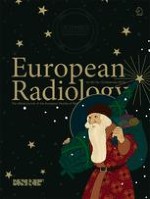Published in:

01-12-2018 | Gastrointestinal
Sub-millisievert CT colonography: effect of knowledge-based iterative reconstruction on the detection of colonic polyps
Authors:
Hyo-Jin Kang, Se Hyung Kim, Cheong-Il Shin, Ijin Joo, Hwaseong Ryu, Sang Gyun Kim, Jong Pil Im, Joon Koo Han
Published in:
European Radiology
|
Issue 12/2018
Login to get access
Abstract
Objectives
To assess the feasibility of ultra-low dose computed tomography colonography (CTC) using knowledge-based iterative reconstruction (IR) and to determine its effect on polyp detection.
Methods
Forty-nine prospectively-enrolled patients underwent ultra-low dose CTC in the supine (100 kVp/20 mAs) and prone positions (80 kVp/20 mAs), followed by same-day colonoscopy. Thereafter, images were reconstructed using filtered back projection (FBP) and knowledge-based IR (IMR; Philips Healthcare, Best, Netherlands) algorithms. Effective radiation dose of CTC was recorded. Pooled per-polyp sensitivity and positive predictive value of three radiologists was analysed and compared between FBP and IMR. Image quality was assessed on a five-point scale and image noise was recorded using standard deviations.
Results
Mean effective radiation dose of ultra-low dose CTC was 0.90 ± 0.06 mSv. Eighty-nine polyps were detected on colonoscopy (mean, 8.5 ± 4.7 mm). The pooled per-polyp sensitivity for polyps 6.0-9.9 mm (n = 22) on CTC reconstructed with IMR (36/66, 54.5%) was not significantly different with that using FBP algorithm (34/66, 51.5%) (p = 0.414). For polyps ≥10 mm (n = 35), however, the pooled per-polyp sensitivity on CTC with IMR (73/105, 69.5%) was significantly higher than that with FBP (55/105, 52.4%) (p < 0.001). In particular, the difference of per-polyp sensitivity was statistically significant in intermediate (p = 0.014) and novice (p = 0.003) reviewers. Furthermore, mean image noise of IMR (8.4 ± 6.2 HU) was significantly lower than that of FBP (37.5 ± 13.9 HU) (p < 0.001) and image quality with IMR was significantly better than with FBP in all evaluated segments in all reviewers (all ps < 0.001).
Conclusions
Sub-mSv CTC reconstructed with IMR was feasible for the detection of clinically significant polyps, demonstrating 70% per-polyp sensitivity of polyps ≥10 mm, while allowing significant noise reduction and improvement in image quality compared with FBP reconstruction.
Key Points
• Sub-mSv CTC using IMR demonstrated 70% per-polyp sensitivity for polyps ≥10 mm.
• CTC using IMR significantly outperformed CTC reconstructed with FBP.
• IMR allows significantly more noise reduction and improvement in image quality than FBP.